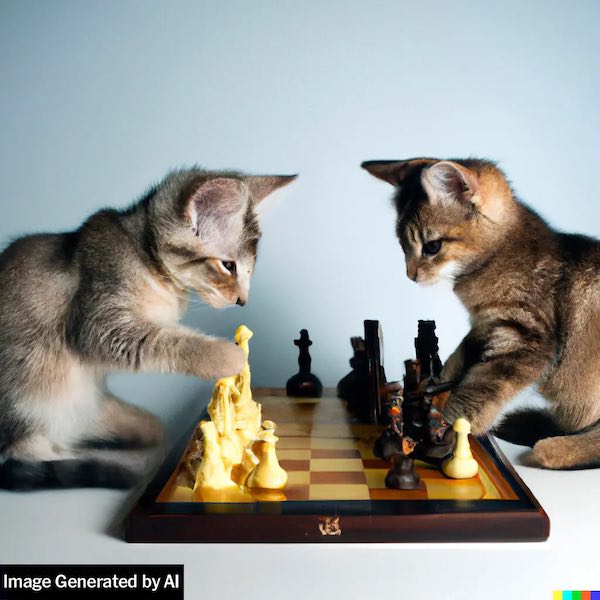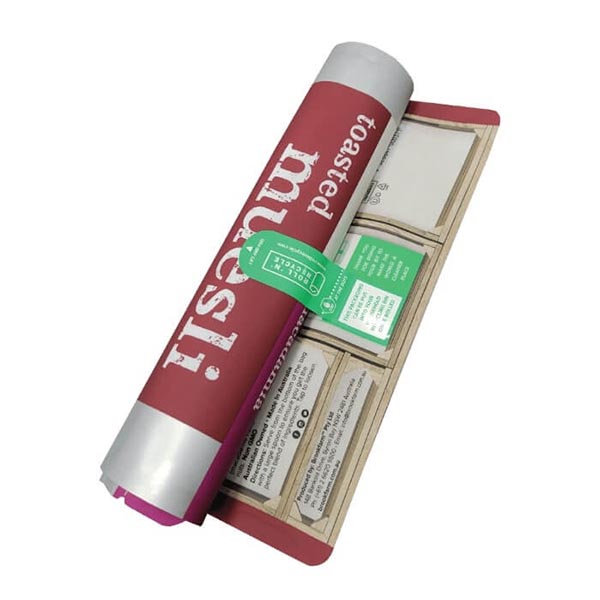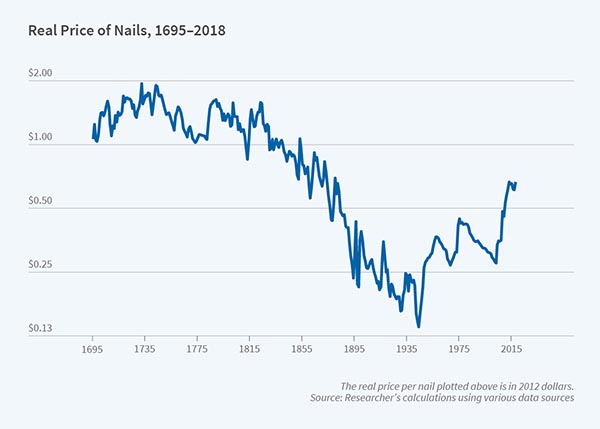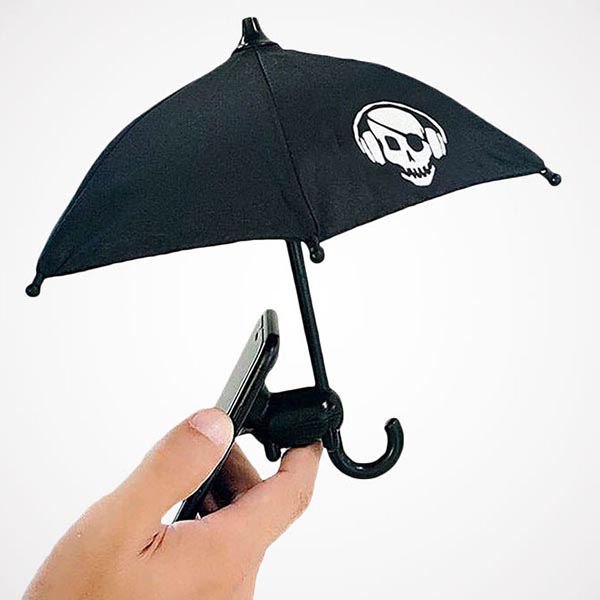Your Friday Racing Drone Flying Through the Tesla Gigafactory Berlin-Brandenberg
AI-Yi-Yi-Yi, Part the Infinity: Think About the Children
We here at WhatTheyThink are very fond of AI-based transcription services. In particular, some of us use Temi to transcribe phone interviews or Zoom calls and while it is usually very accurate, even when subjects have strong accents or a particular phone connection is bad, transcripts still need to be carefully looked over, as the AI doesn’t always handle industry jargon very well, and sometimes it mishears things, often quite amusingly. (In one transcript, “we’re the biggest printer in the Southeast” became “we’re the biggest predator in the Southeast,” so you’ve got to be careful.) And sometimes it has a dirty mind. (One idea for a future April Fool’s story would be to run a completely unedited Temi interview.).
We bring this up because such popular automatic speech recognition systems like Google’s Speech-To-Text and Amazon Transcribe have been adding misheard and age-inappropriate subtitles to children’s YouTube videos. The Indian Express reports on a recent study into the matter:
‘Beach to bitch: Inadvertent Unsafe Transcription of Kids Content on YouTube’…covered 7,013 videos from 24 YouTube channels.
Ten per cent of these videos contained at least one “highly inappropriate taboo word” for children, says US-based Ashique KhudaBukhsh, an assistant professor at Rochester Institute of Technology’s software engineering department.
KhudaBukhsh, assistant professor Sumeet Kumar of Indian School of Business in Hyderabad and Krithika Ramesh of Manipal University, who conducted the study, have termed the phenomenon “inappropriate content hallucination”.
“Inappropriate content hallucination”—there’s a term were going to use a lot.
Inappropriate content hallucination was found in channels with millions of views and subscribers, including Sesame Street, Ryan’s World, Barbie, Moonbug Kid and Fun Kids Planet, according to the study.
The closed captions on YouTube videos are generated by Google Speech-To-Text while Amazon Transcribe is a top commercial ASR system. Creators can use Amazon Transcribe to embed subtitles in their videos and import them into YouTube when uploading the file.
The study was presented and accepted at the 36th annual conference of the Association for the Advancement of Artificial Intelligence in Vancouver in February.
It seems like it would be a good idea for there to be some kind of human oversight, or at least until the problem can be sorted. Just ask the biggest predator in the Southeast.
Bad Eats
the looks like parody food from a verhoeven movie about living in an off-world mining colony pic.twitter.com/4U9NZCfjmt
— lauren (@NotABigJerk) April 4, 2022
AI-Yi-Yi-Yi, Part the Infinity +1: Hello, DALL-E
Do you want to be able to draw whatever images you can envision—but lack any kind of artistic ability? Well, now if you can describe it, you can draw it—or at least have AI draw it. Meet DALL-E, a technology being developed by OpenAI that will let you create digital images simply by describing what you want to see. Says the New York Times:
When he asked for “a teapot in the shape of an avocado,” typing those words into a largely empty computer screen, the system created 10 distinct images of a dark green avocado teapot, some with pits and some without. “DALL-E is good at avocados,” Mr. Nichol said.
When he typed “cats playing chess,” it put two fluffy kittens on either side of a checkered game board, 32 chess pieces lined up between them. When he summoned “a teddy bear playing a trumpet underwater,” one image showed tiny air bubbles rising from the end of the bear’s trumpet toward the surface of the water.

This is all well and good, but as with any technology there is a potential dark side:
But for many experts, DALL-E is worrisome. As this kind of technology continues to improve, they say, it could help spread disinformation across the internet, feeding the kind of online campaigns that may have helped sway the 2016 presidential election.
“You could use it for good things, but certainly you could use it for all sorts of other crazy, worrying applications, and that includes deep fakes,” like misleading photos and videos, said Subbarao Kambhampati, a professor of computer science at Arizona State University.
Consider Yourselves Warned
Emoji reactions are coming to Google Docs https://t.co/bdEq3REkcD pic.twitter.com/3uVmS1gjZf
— The Verge (@verge) April 6, 2022
Ems & Ems
Last fall, we linked to an interesting app that stripped out all words from a block of text, leaving only the punctuation. We gave it a spin on a few articles by various WhatTheyThink contributors and one thing we noticed was that a few are highly addicted to em dashes. It turns out, a lot of people who used that app were, as well, and were actually embarrassed by it. But, as Clive Thompson wonders over on Medium, why are we ashamed of using the em dash?
Why do em dashes have such a bad rap for being overused? I’ve tried to find data on their actual incidence, to see whether they’ve become more insidiously deployed over time. Maybe digital publishing has created a genuine uptick in em dash overuse? Alas, I’ve not found anything. (If you do, email me at [email protected] — love to hear!)
I think part of the shame comes from editors, who frequently chastise writers for using em dashes too freely. On the New York Times’ blog, Patrick LaForge argued that the overuse of em dashes can “tax readers’ patience.” Over at Slate, Noreen Malone worried that their overuse “discourages truly efficient writing.”
He then proposes six reasons to use the em dash. We won’t run through them here, but a good one is that em dashes set a reading tempo.
Punctuation, for me, is centrally about tempo.
In fact, I have probably an unhealthy obsession with tempo in my writing. As I write, I subvocalize every sentence, feeling around for where the pauses lie, or where the forward rush of a run-on sentence imparts a fun tobogganing energy.
So I tend to perseverate over minute differences in the musical effects of different punctuation marks. Most of this is head canon, mind you. I doubt anyone else, including my readers, interprets punctuation quite as I do — so I’m probably imagining tempo effects that are lost on my baffled audience.
Either way! I love how a semicolon gently connects two sentences with a sort of demi-pause — or how a colon brings you up short for an instant before it introduces a list.
But the em dash? It’s the most versatile of all tempo markers!
Likewise:
The em dash evokes the cadence of conversation
As Rachel Holliday Smith — a reporter for The City — notes, the em dash “gets at the emphasis of how people really talk.”
She’s right! That’s part of what I notice when I’m vocalizing my lines. Em dashes often have a curiously oral cadence. It’s why one can use em dashes in a way that seems to utterly violate rules of grammar yet nonetheless feels perfect.
Here at WhatTheyThink, we have a very open policy when it comes to em dashes (well, open in the sense of allowing contributors to use them fairly freely, but we do set them “closed” with no word spaces before and after). We do frown on using en dashes in place of em dashes, or the old typewriter kludge of two hyphens which, thankfully, Word corrects.
Em Dash
Sometimes I think about the professor in college, a longtime writer for glossy magazines, who after reading my papers summoned me to office hours and, with a sigh, taught me how to correctly type an em dash on a keyboard.
— Moira Donegan (@MoiraDonegan) April 7, 2022
Marie, Marie, Hold on Tight
Are you a fan of T.S. Eliot’s postmodern poetic masterpiece The Waste Land? Are you in London? If so, good news! This October will mark the 100th anniversary of the publication of Eliot’s epic, taking place—appropriately, given the poem’s iconic opening line—in April. Via The Guardian, yesterday, 22 churches in the City of London began participating in Fragments, a six-day festival of all things Waste Land.
Anyone wanting dry textual analysis should look elsewhere: there is not a single straightforward reading of the poem on offer. Instead, Doran and his fellow director Liam Browne have programmed a jamboree of artistic reimaginings, many of them musical, blending – as the poem does – down-and-dirty popular culture with the highest of art. One event features a piano transcription of Stravinsky’s The Rite of Spring, which Eliot heard the year before the poem came out and which affected him profoundly. Another is assembled around Messiaen’s Quartet for the End of Time, written in a Nazi prisoner of war camp and likewise shot through with a sense of precarious faith in the bleakest of circumstances. The festival concludes with a tribute to the music hall star Marie Lloyd at Wilton’s, whom Eliot passionately – perhaps incongruously – admired as a “genius” and whose obituary he composed a week before The Waste Land first came out.
The poem was itself written in the wake of a world war (I) and the global pandemic (1918), and while it is a pretty dark (it opens with April being the cruelest month because in a barren unfertile land, the idea of the rebirth in spring is cruel joke, reminding us of better times), ultimately it ends up being about hope and renewal.
Doran observes[,] “A hundred years on, here we are again: Covid, world war, the sense of the fragility of life, even climate change. The poem couldn’t be more relevant to now.”
Categories
Quite a specific category, but with a lot of competition. https://t.co/LoR7kzAJov
— Liz Buckley (@liz_buckley) April 4, 2022
Roll Up!
We are all familiar with a type of packaging called flexible plastic packaging, usually polyethylene pouches that hold products like cheese and other prepared foods. The annoying thing about this type of packaging is that it is not recyclable—but not in a technical sense but in a…well, geometric sense. That is, since these packages are flat when empty, they are difficult for recycling plant sorting machines to detect, or can be mistaken for paper and shunted to the wrong machine where they then contaminate the paper recycling stream. As a result, very little of this technically recyclable material actually is recovered. One Australian study found that less than 5% of it was salvaged for recycling.
However, via Core77, one organization—Close the Loop Group—has come up with a simple and elegant solution to recovering these packages: make them into 3D shapes.
Thankfully, Close the Loop Group has created a solution through OF Packaging, one of their business groups. Australian food manufacturer Brookfarm makes muesli, which is often sold in FPP. Upon learning that FPP is often not recycled due to the problems mentioned above, the company hired OF Packaging to design a solution.
It took over a year of development and testing, but OF Packaging's designers finally cracked it. The issue is that FPP is essentially a 2D object, and if it was 3D, the scanning machines at materials recovery facilities could detect and sort it. So the designers came up with this Roll 'n' Recycle package, which is just a polyethylene pouch whose label can be partially peeled back.
When the consumer's finished with the packaging, they roll it into a cylindrical shape, then partially unpeel the label and press it onto the cylinder to hold its shape.

And the label itself becomes part of the new structure, helping it retain its shape—which now be placed in curbside recycling bins. Brilliant!
Trade Offs
Yes, but I'm spending less. https://t.co/PKtZ8Pjmp2
— (((Joshua Malina))) (@JoshMalina) March 31, 2022
The Graphene Chips Are Up!
Was it a good week for graphene news? It’s always a good week for graphene news! Graphene goes disease hunting, thanks to a biochip being developed by Archer Materials. From Graphene-Info:
Archer Materials has announced a milestone in the development of its biochip, which is being created to detect various deadly communicable diseases.
The company achieved electronic transport in atom-thin graphene integrated with silicon electronics. Various voltage ranges were repeatedly recorded on the integrated devices when current-voltage traces were performed.
The work fundamentally links to using a graphene transistor, which the company intends to use in future operations to enable ultrasensitive detection and analysis of diseases.
The results of the electronic measurements allow to company to progress into building graphene-based transistors, a requirement for the operation of Archer’s biochip technology.
Desperate Measures
Struggling Tech Company Almost Desperate Enough To Start Making Actual Product https://t.co/u5KwBgh83e pic.twitter.com/oLO1azPq4l
— The Onion (@TheOnion) March 12, 2022
Over the Heardle
Wordle variants continue to proliferate. First, there were Lewdle and Sweardle, a mathematical variant called Nerdle, and a geographic one called Worldle. Now there is a musical variant called Heardle.
A respectful homage to Wordle, with a musical twist.
Each Heardle is semi-randomly plucked from a long list of popularly streamed artists. Much love, and all relevant copyright, to those featured.
Now and Venn
This is really good. pic.twitter.com/xImAcpAJDd
— Dr. Katy Pearce (@katypearce) April 2, 2022
Nailed It
We admit, we track some fairly abstruse data series, but we came across a very niche study from the National Bureau of Economic Research (NBER)—you may know them better as the organization that determines when recessions occur. Anyway, they just released a working paper compellingly titled The Price of Nails since 1695: A Window into Economic Change. Why would anyone be interested in 300+ years of nail pricing? Actually, to track changes in manufacturing processes and productivity growth. But why nails?
because they are a basic manufactured product whose form and quality have changed relatively little since the late 1600s. The production method, however, has changed dramatically. At the beginning of the period being studied, nails were hand-forged by hammering a rod of iron. Later, nails were cut from strips of iron or steel, and most recently, cut from wire.
While declining input prices contributed to reductions in nail prices, the most important source of the decline was multifactor productivity growth in nail manufacturing due to increasing specialization of labor and the reorganization of production processes. The long-term trend of declining real nail prices reversed in the middle of the last century. This was partly due to rising material prices, but also to difficulty in tracking domestic production of basic nails during the last half century. In the wake of import competition, US nail producers have shifted toward specialty nail production. Finally, including the complementary technology of nail guns, which have diffused in recent decades, the price of installed nails has risen much less since 1950 than the price of nails themselves.

Nails. Go figure.
Eight Paws to Hold You
Octopussy. pic.twitter.com/Hg2i32ngWQ
— cluedont (@cluedont) April 1, 2022
What Kind of (Boring) Day Has It Been?
Whether it’s the always-on nature of the Internet, social media, and Twitter—and, before all that, 24-hour cable news—there is a sense that there is always something happening. Especially since 2020, it’s hard to think of a day that was…well, boring. In this age of constant doomscrolling, we long for a day like, say, April 18, 1930, when a BBC news announcer famously reported, “There is no news today,” followed by piano music playing for the remainder of the 15-minute “evening news.”
That surely must have been a boring day, but, via Boing Boing, the YouTube channel Half as Interesting has statistically determined that April 11, 1954, is the most boring day in human history.
A British computer scientist named William Tunstall-Pedoe built a massive database called [true knowledge], which was a compendium of crowd-sourced facts programmed to answer simple questions. (After it was acquired by Amazon, it became Alexa.) [true knowledge] grew to encompass more than 300 million facts, and it turned out that a very great many of those facts were events that happened on specific dates. So it then became a simple case of asking the database to identify the date on which the fewest number of things happened (limited to the last two centuries), which turned out to be April 11, 1954. This is not to say that nothing happened—but the most exciting event on that day was the Belgian general election, which was decidedly undramatic (would that we could have that kind of election these days).
At any rate, it’s worth checking out.
The Eternal Dilemma
Should I fill this with blood or spiders pic.twitter.com/p6ttZkBzrd
— Phil Nobile Jr. (@PhilNobileJr) April 4, 2022
Feed Your Head
Can you detect the subtle snark in this Guardian headline: “Mushrooms communicate with each other using up to 50 ‘words’, scientist claims.” Are mushrooms talking and, if so, what are they talking about?
Previous research has suggested that fungi conduct electrical impulses through long, underground filamentous structures called hyphae – similar to how nerve cells transmit information in humans.
It has even shown that the firing rate of these impulses increases when the hyphae of wood-digesting fungi come into contact with wooden blocks, raising the possibility that fungi use this electrical “language” to share information about food or injury with distant parts of themselves, or with hyphae-connected partners such as trees.
OK, fine, but is it language?
Mathematical analysis of the electrical signals fungi seemingly send to one another has identified patterns that bear a striking structural similarity to human speech.
…The research, published in Royal Society Open Science, found that these spikes often clustered into trains of activity, resembling vocabularies of up to 50 words, and that the distribution of these “fungal word lengths” closely matched those of human languages.
Split gills – which grow on decaying wood, and whose fruiting bodies resemble undulating waves of tightly packed coral – generated the most complex “sentences” of all.
But, then again, “‘There is also another option – they are saying nothing.’” So it is like a lot of human speech.
Big Family
that is too many Italian bros pic.twitter.com/hk7R829VBj
— CHOAM Nomsky (@samthielman) March 31, 2022
No. Just No.
From Core77 in their “Hell in a Handbasket” series:
Yet another symptom of something amiss in our society, it's a $22 “phone umbrella suction cup stand” consisting of a silicone piglet with a suction cup for a head and a size XL cocktail umbrella.

Apparently, people have actually bought this, and actually do like it while having extended phone sessions in the sun. OK, then.
Chicken Art
London’s National Gallery has licensed use of some of its impressionist masterpieces to KFC China for decorating buckets of chicken.
— Quite Interesting (@qikipedia) March 16, 2022
This Week in Printing, Publishing, and Media History
April 4
1581: Francis Drake is knighted for completing a circumnavigation of the world.
1768: In London, Philip Astley stages the first modern circus.
1818: The United States Congress, affirming the Second Continental Congress, adopts the flag of the United States with 13 red and white stripes and one star for each state (20 at that time).
1928: American memoirist and poet Maya Angelou born.
1975: Microsoft is founded as a partnership between Bill Gates and Paul Allen in Albuquerque, N.M.
April 5
1710: The Statute of Anne receives the royal assent establishing the Copyright law of the United Kingdom.
1908: American actress Bette Davis born.
1929: English songwriter and producer Joe Meek born.
1954: American singer-songwriter and guitarist Stan Ridgway born.
April 6
1483: Italian painter and architect Raphael born.
1861: First performance of Arthur Sullivan’s debut success, his suite of incidental music for The Tempest, leading to a career that included the famous Gilbert and Sullivan operettas.
1892: American journalist and author Lowell Thomas born.
1895: Oscar Wilde is arrested in the Cadogan Hotel, London, after losing a libel case against the Marquess of Queensberry.
1947: The first Tony Awards are presented for theatrical achievement.
1992: American science fiction writer Isaac Asimov dies (b. 1920).
April 7
1770: English poet William Wordsworth born.
1805: German composer Ludwig van Beethoven premieres his Third Symphony at the Theater an der Wien in Vienna.
Kodak camera was first placed on sale today 1889: pic.twitter.com/iC9f0RGQEU
— Michael Beschloss (@BeschlossDC) April 6, 2022
1927: The first long-distance public television broadcast (from Washington, D.C., to New York City, displaying the image of Commerce Secretary Herbert Hoover).
1949: The Rodgers and Hammerstein musical South Pacific opens on Broadway; it would run for 1,925 performances and win 10 Tony Awards.
1964: IBM announces the System/360.
1969: The Internet’s symbolic birth date: Publication of RFC 1.
April 8
1820: The Venus de Milo is discovered on the Aegean island of Milos, which archaeologists found disarming.
1904: Longacre Square in Midtown Manhattan is renamed Times Square after The New York Times.
1942: American director, producer, and special effects artist Douglas Trumbull born.
1947: Mood for a day: English guitarist, songwriter, and producer Steve Howe born.
1959: A team of computer manufacturers, users, and university people led by Grace Hopper meets to discuss the creation of a new programming language that would be called COBOL.
April 9
1553: French monk and scholar, author of Gargantua and Pantagruel, François Rabelais dies (b. 1494).
1821: French poet and critic Charles Baudelaire born.
1830: English photographer and cinematographer Eadweard Muybridge born.
1860: On his phonautograph machine, Édouard-Léon Scott de Martinville makes the oldest known recording of an audible human voice. In 2008, researchers at the Lawrence Berkeley National Laboratory in Berkeley, Calif., did successfully convert a “phonautogram”—“squiggles on paper,” essentially—recorded in 1860 to a digital audio file. It was a 10-second clip of a singer, possibly female, warbling “Au clair de la lune.” It is believed to be the earliest known sound recording, preceding Thomas Edison’s attempts by almost two decades. (Poor Charlotte Green, BBC Radio 4’s newsreader, who played the restored phonautogram on her broadcast, but was unable to get through the next story—alas, an obituary—without cracking up.)
1898: American singer, actor, and activist Paul Robeson born.
1928: American singer-songwriter, pianist, and mathematician Tom Lehrer born.
1959: NASA announces the selection of the United States’ first seven astronauts, whom the news media quickly dub the “Mercury Seven.”
1965: Astrodome opens; first indoor baseball game is played.
April 10
1710: The Statute of Anne, the first law regulating copyright, comes into force in Great Britain.
1847: Hungarian-American journalist, publisher, politician, and founder of Pulitzer, Inc. Joseph Pulitzer born.
1925: The Great Gatsby by F. Scott Fitzgerald is first published in New York City, by Charles Scribner’s Sons.
1934: American journalist and author David Halberstam born.
2019: Scientists from the Event Horizon Telescope project announce the first ever image of a black hole, located in the center of the M87 galaxy.















Discussion
Only verified members can comment.